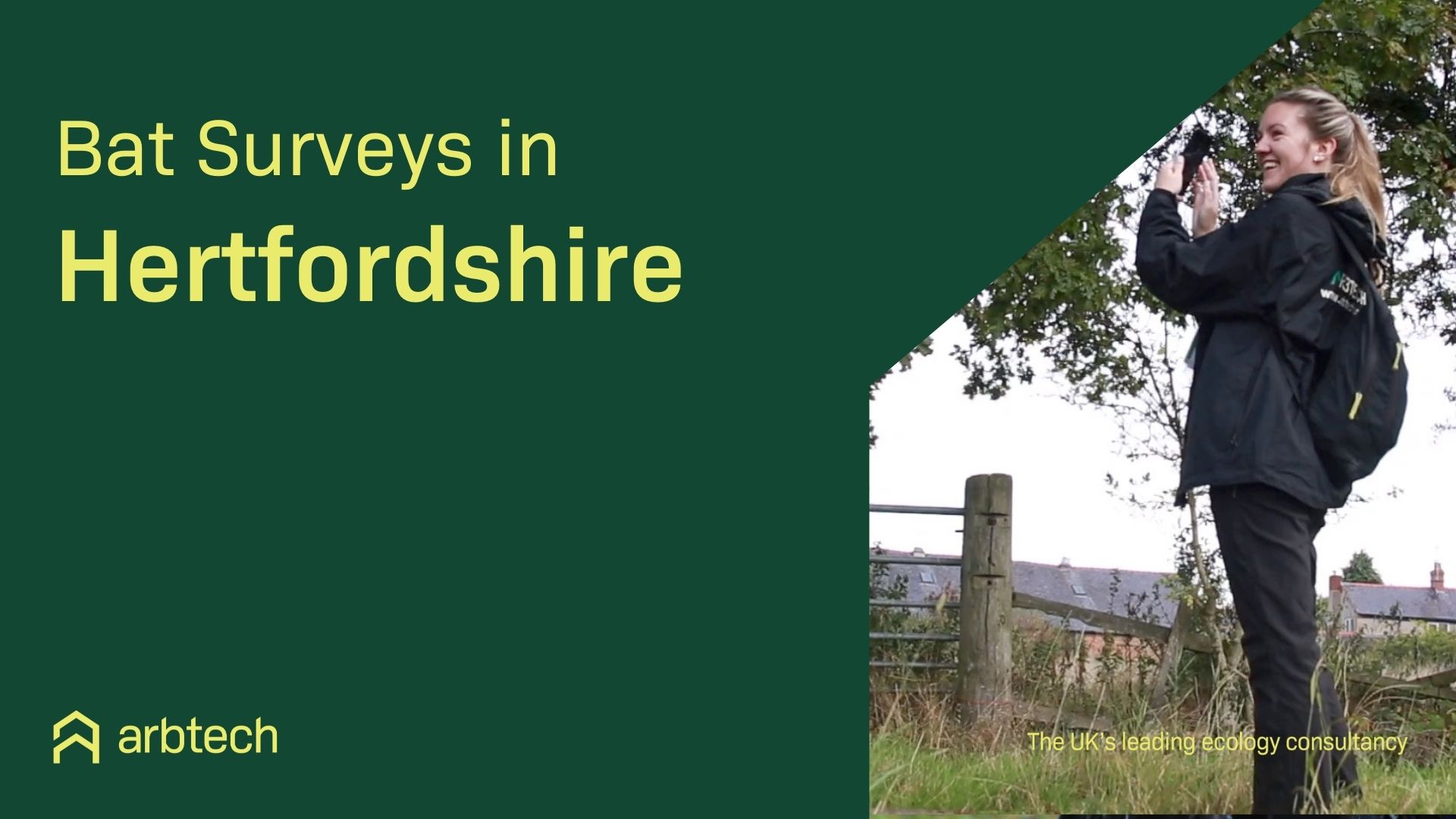The State of Biodiversity in Hertfordshire
Made up of 37 settlements, the largest sections of Hertfordshire based on population are Watford, Hemel Hempstead, Stevenage and St Albans, and it holds a strong sense of biodiversity with a 70% majority of countryside across the county.
Based on the clear abundance of countryside areas across Hertfordshire, it comes as no surprise to see that many of the most popular attractions are rural, including Amaravati Buddhist Monastery, the Cathedral and Abbey of Saint Alban, Cassiobury Park, Fairlands Valley Park, Gadebridge Park, Leavesden Country Park and Verulamium Park to name a few.
As well as the positive impact a multitude of green areas has on the environment, it also facilitates suitable habitat locations for a variety of wildlife species. Among the selection of animals present in Hertfordshire are European protected species such as bats. However, as several core pieces of legislation insist on protected species avoiding harm, a bat survey undertaken by an expert ecologist would be required before a land development on development sites that could house local bats is given the go-ahead.
Hertfordshire Bats
From the 18 bat species present in the UK, ten are often spotted in Hertfordshire including the common pipistrelle bat (Pipistrellus pipistrellus), soprano pipistrelle bat (Pipistrellus pygmaeus) and Nathusius’ pipistrelle bat (Pipistrellus nathusii), Barbastelle bat (Barbastella barbastellus), brown long-eared bat (Plecotus auritus), Daubenton’s bat (Myotis daubentonii), Leisler’s bat (Nyctalus leisleri), Natterer’s bat (Myotis nattereri), Noctule bat (Nyctalus noctula) and Serotine bat (Eptesicus serotinus).
Although extremely rare in the county, there have also been a small number of reports of the Brandt’s bat (Myotis brandtii) and whiskered bat (myotis mystacinus) spotted in Hertfordshire.
Local Bat Protection Measures
Present bat species across Hertfordshire are protected on a national level by the Bat Conservation Trust, and on a local level by the Hertfordshire and Middlesex Bat Group (HMBG). The HMBG claim that evidence suggests bat populations are gradually dropping in numbers over the last 50 years, with the causes ranging from a depletion of suitable roosting sites to a lack of understanding of the appropriate course of action for anyone that comes into contact with bats.
The HMBG intend on promoting bat conservation and retaining existing bat presence through several core policies. Activities outlined in their constitution include to arrange events that promote public awareness of bats and issues relating to bats, enforce the advice originally put forward by Natural England and other corresponding organisations, manage bat conservation projects, foster injured or orphaned bats until they are well enough to return to the wild, keep a record of vital data relating to local population, behaviour and distribution, protect important sites, and stage visits to the properties and sites of people who have an occupation of bats.
Plan a Bat Assessment
Whether you are aware of bats inhabiting your site and have been told to arrange a bat survey or have reason to believe bats may be present and need confirmation before moving ahead with your development project, bat surveys fulfil a requirement for you, your project and the local planning authority.
Bat surveys come in a handful of forms to suit varying purposes. However, regardless of your reason for needing a bat survey, the first step in the bat surveying process is a Preliminary Roost Assessment (PRA). Split between a desk study and a physical inspection, a PRA consists of a licensed ecologist visiting the site to gauge if evidence such as bat droppings, carcasses, feeding remains or features that could pose potential roosting opportunities indicate a bat presence. If evidence points towards bat activity in the vicinity, the next question will be whether potential roosting bats on the site could be disturbed or harmed as a result of the development project.
Under ideal circumstances, the results from the PRA will indicate that no bats are present on the site, or at least that the ecologist believes a likely absence or that any potential bat roosts will not be affected by the proposed development works. If, however, the professional ecologist finds that inhabiting bats are present and will be disturbed, they will need to conduct a Bat Emergence and Re-Entry Survey (BERS). Also known as a Bat Emergence Survey or Bat Activity Survey, a BERS involves one or several ecologists undertaking an internal and external inspection of the property and monitoring potential access points on the site solely during dusk and dawn over multiple visits to determine specific population numbers and species of bats.
Following completion of these assessments, the bat ecologist will develop a bat survey report to present suitable mitigation measures to the local council, supporting the planning permission application and enabling the project to go ahead as planned. Preliminary Roost Assessments can be conducted at any time in the year, whereas Bat Emergence Surveys can only be held outside of hibernation between April and October, with a preference over summer months between May and September. As such, it would be strongly advisable to book a bat survey early and ensure that you don’t face unnecessary delays to your planned works.
Involve Arbtech with Your Project
Our ecology team has members of staff across the UK, so if you are developing in the Hertfordshire area, we are ready to take your call and carry out a bat survey at the next available opportunity. As ecology survey experts, we can conduct further surveys alongside bat surveys such as a wide range of protected species surveys, all with the aim of assisting development projects in the corresponding areas.
We also offer a free quote to simplify the decision making process for our clients. Get in touch by filling out the quote form on this page, calling us on the number at the top of this page or visiting our ‘Contact Us‘ page for more communication options, and we can help you to achieve planning consent from your local planning authority and take the next step in your project.



